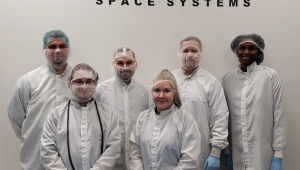Rubicon Space Systems has delivered the propulsion system for NASA's Green Propulsion Dual Mode (GPDM) technology demonstration mission, set to launch in October 2025. The mission will showcase an innovative multimode propulsion system, combining integrated chemical and electric thrusters, alongside ASCENT, a green propellant developed by the U.S. Air Force Research Laboratory.
The GPDM mission will be the first to test a combined chemical and electric propulsion system in space and will serve as a key demonstration of the ASCENT propellant. “It will be the first combined chemical and electric propulsion system in space and a key test of ASCENT,” said Daniel Cavender, director of Rubicon, a division of Plasma Processes.
ASCENT, short for Advanced Spacecraft Energetic Non-Toxic, promises a 50% increase in specific impulse density compared to the traditional hydrazine propellant. It also offers easier ground handling, as noted in a NASA Marshall Space Flight Center briefing on the mission.
Rubicon's ASCENT chemical propulsion module, named Sprite, is paired with electrospray thrusters developed by the Massachusetts Institute of Technology (MIT). The four electrospray thrusters delivered to NASA in September share Sprite's propellant tank, control valves, and feed system.
The mission's engineers have closely examined the lessons learned from NASA's Lunar Flashlight cubesat, which failed to reach lunar orbit in 2023. The Lunar Flashlight's failure was linked to debris clogging its propellant lines. To avoid a similar issue, Rubicon conducted CT scans to ensure Sprite's propellant lines were free from debris and particulates, and performed a hot-fire test of the system.
“We have certainly done our due diligence in addressing the FOD [foreign object debris] concern of Lunar Flashlight,” Cavender remarked.
The delivery of the propulsion system marks an important milestone for Rubicon, a Huntsville, Alabama-based company. “This is the first time that we've produced an integrated propulsion system,” Cavender said. “We've gone from being a component manufacturer to an integrated, functional product manufacturer.
Cavender has worked with ASCENT since NASA's Green Propellant Infusion Mission launched in 2019, and also served as the project manager for the Lunar Flashlight mission. He emphasized that ASCENT's main advantage lies in its high specific impulse density, which is particularly beneficial for small spacecraft with limited volume. Additionally, ASCENT offers improved safety compared to traditional hydrazine, as it allows fueling at the factory, during transit, or on the launch vehicle.
